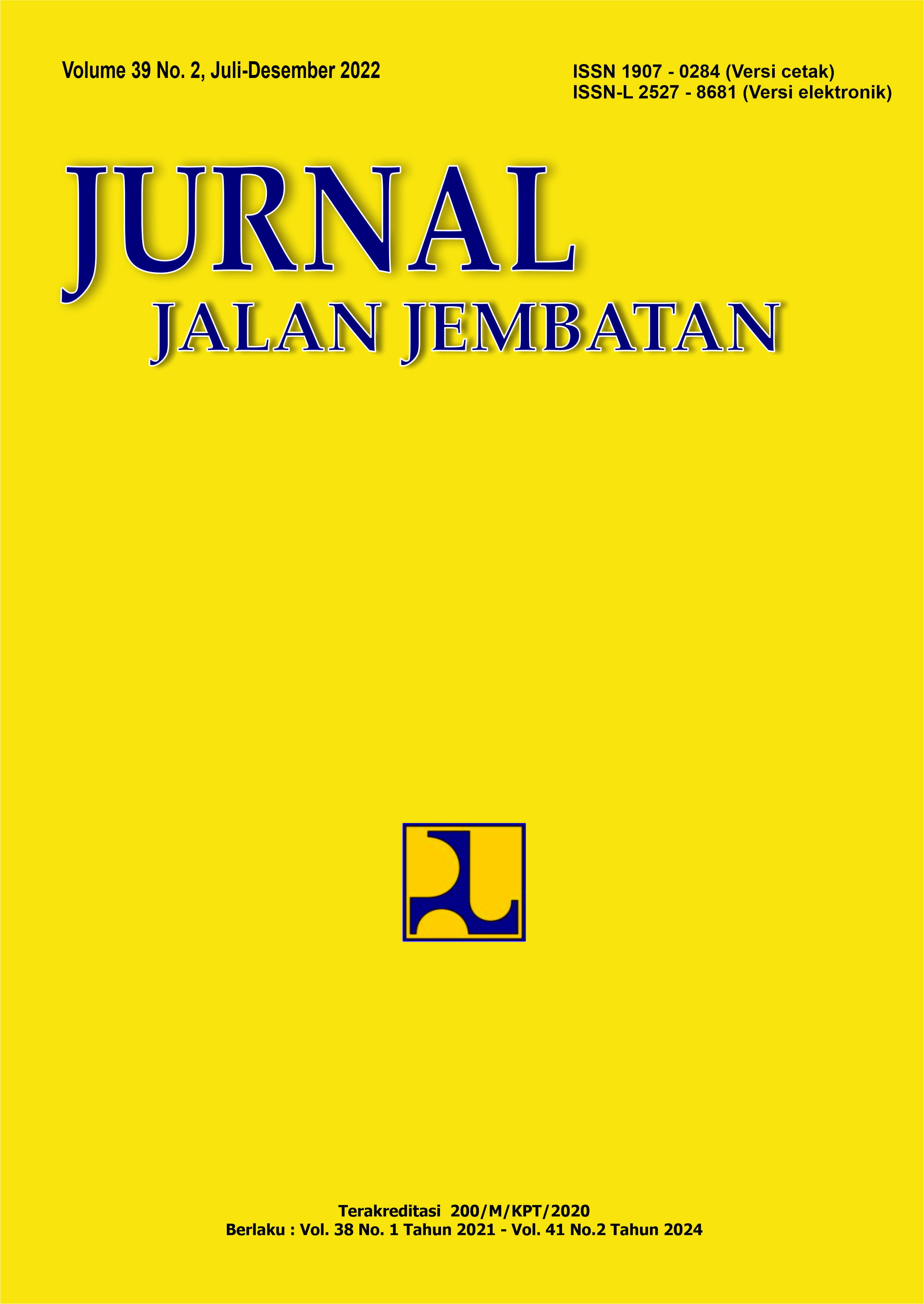QUANTITATIVE AND QUALITATIVE ANALYSIS OF LIQEUFACTION POTENTIAL IN MEDIUM-DENSE SANDY SOIL AREA NEAR OPAK FAULT
Main Article Content
Abstract
In May 2006, an earthquake occurred in Bantul Regency and showed liquefaction phenomena like lateral spreading and sand boiling. The 2019 Indonesia Liquefaction Vulnerability Zones Map identified the Bantul coast as a moderate to high liquefaction risk zone. This research aims to determine the potential for liquefaction due to soil movement in the Kretek 2 Bridge construction area, Bantul Regency, D.I Yogyakarta, nearby the opak fault as a seismic source. The preliminary study used the grain size analysis approach by Tsuchida (1970) shows soils predominantly in the most liquefiable category and others in the potential liquefaction category. Youd et al. (1979) and Hakam (2020) approaches also show that liquefaction vulnerabilities extend through most of the boreholes. The simplified procedure by Idriss and Boulanger's (2008) analysis shows a liquefaction potential at a depth of 0 to 16.5 m with a thickness of 1.5 to 9 m, except for BH-4, which does not have any liquefaction potential. Meanwhile, the quantitative and qualitative analysis results using the liquefaction severity index showed that BH-3, BH-9, BH-12, and BH-13 had very low categories. In BH-1, BH-2, BH-5, BH-6, BH-7, BH-8, and BH-14 had low category. While BH-11 is in the moderate category and BH-10 is in the high category. The quantitative and qualitative analysis results were then drawn into a microzonation map of ​​the Kretek Bridge 2 liquefaction severity area to facilitate stakeholders in ensuring the safety of the foundation system used.
Keywords: kretek 2 bridge, preliminary, simplified procedure, liquefaction severity index, microzonation map
Article Details
Authors who publish in this journal agree to the following terms:
-
Authors retain copyright and grant the journal the right of first publication with the work simultaneously licensed under a Creative Commons Attribution License, which allows others to share the work with acknowledgment of the work's authorship and initial publication in this journal.
-
Authors may enter into additional contractual arrangements for the non-exclusive distribution of the journal's published version of the work (e.g., post it to an institutional repository or publish it in a book), with acknowledgment of its initial publication in this journal.
-
Authors are permitted and encouraged to post their work online (e.g., in institutional repositories or on their website) as it can lead to productive exchanges, as well as earlier and greater citation of the published work.
Each submitted manuscript must be accompanied by a "Manuscript Originality Statement" and a "Copyright Transfer Statement".

